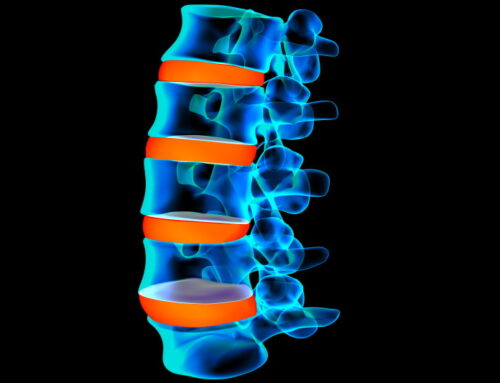Back pain is one of the most common problems in the world- at least 80% of people will suffer from it at some point, and it’s responsible for a huge amount of lost work and low productivity worldwide.
Sometimes called ‘Lumbago’, which seems like a really old-fashioned term, chronic back pain is no joke- the constant pain and discomfort is very debilitating and can even lead to depression as people get sick and tired of being unable to find relief or even to get a good night’s sleep.
What is Lumbago?
Back pain can happen to people of any age, and the most affected area tends to be the lower back, or lumbar region – hence the term ‘lumbago’.
This area is composed of five vertebrae that support the full weight of the upper body, putting the lumbar region under significant strain and thus increasing its fragility.
There are three stages of back pain, based on how long you have had it and how severe it is:
Acute lumbago is a pain that can last up to four weeks. It can range from mild discomfort, to complete inability to work, perform normal activities, or sit/stand with ease.
Sub- acute lumbago persists for longer than a four-week period, and might even last as long as 3 months. It’s important that you get help for this, otherwise it may become chronic.
Chronic lumbago is the most long-lasting; it’s pain that goes beyond three months and is constant. About 5% of lumbago cases develop into chronic conditions, and in order to treat this kind of pain effectively a multidisciplinary approach is often required- that means you may need help from your doctor, your physiotherapist, and other medical professionals in order to find relief and recovery.
Causes of Lower Back Pain
Lumbago, or pain in the lower back, is actually just a symptom of something deeper, and the root causes can be quite varied. In some cases there may not be any particularly memorable event or trauma that the patient can remember that would account for the pain.
The primary causes of Lower Back Pain are:
- Some kind of damage to a muscle, tendon or ligament.
- Vertebral damage, for example a degenerated disc (as we age, our discs tend to wear out) or even a herniated/bulging disc.
- Poor posture and excess weight put incredible strain on the lower back.
- Joint damage. Various types of arthritis (irritation) and arthrosis (wear) can trigger pain and stiffness in the lumbar region.
- Skeletal damage. Osteoporosis is a common condition, particularly in women, whereby the bones become porous and vulnerable to fracture.
- Gynaecological problems. Women often experience back pain during menstruation or after childbirth.
Regardless of the root cause of the back pain, our bodies try to safeguard themselves with muscle spasms, which in turn can cause even more pain and discomfort.
Some people experience a pain in their buttock or at the back of the leg- this is where the sciatic nerve is located, and irritation of that nerve causes sciatica.
If you experience a numbness, tingling or even a loss of sensation in one or both legs, this is serious – it may indicate neurological damage.
Physiotherapy for Lower back Pain
It’s very important to treat back pain quickly; otherwise the likelihood of it becoming chronic is increased and the longer it continues, the longer it takes to treat.
When you first come to Portobello Physiotherapy Clinic, you’ll get a full assessment of your overall health, range of movement, and severity of the pain.
This will help your physiotherapist to specify the degree of your lumbago, and potential causes for it.
A treatment plan developed specifically for you; your back pain and your lifestyle will be tailored with the aim of reducing the pain and increasing your mobility to allow you to be comfortable in your daily activities.
There are a host of techniques to help you improve your back and your pain, so depending on your particular case, your physiotherapist can use anything from massage to manipulative therapy techniques during both the acute and chronic phases of your pain.
Dry needling, electrotherapy, exercise and stretches will all play a part in reducing your level of pain and increasing muscle strength and flexibility – if you are overweight or have poor posture, remember that both can play havoc with your lower back.
Ensuring long-term lower back health
Ultimately, losing weight and building up your core strength will help ensure optimum lower back health. Your physiotherapist will give you exercises to do at home and you should get into the habit of being rigorous about doing them, as they will help you keep your back strong.
If you do have further pain at home, your physiotherapists can advise you on use of heat and/or cold for pain relief, as well as the best way to sit and lie to minimise strain on your lower back.
To book an appointment at Portobello Physiotherapy Clinic, call 01 4763330.






